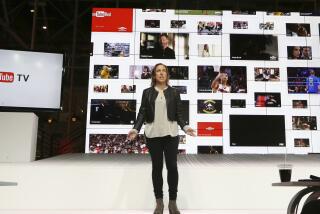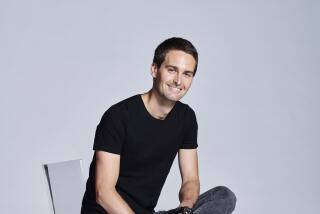Apple pioneer brings emotion and design savvy to Google+
- Share via
SAN JOSE — Andy Hertzfeld was ready to retire in 2009, following a momentous 30-year-plus career in which he worked side by side with Steve Jobs and Steve Wozniak to design the revolutionary user interface of Apple’s Macintosh computers, before launching several start-ups and going on to Google.
But Google co-founder Sergey Brin had other ideas. Brin wanted to graft Hertzfeld’s Apple-bred sense of aesthetics and function into the new social network that Google’s leadership was just starting to think about, a top-secret project that a year and a half later would become Google+.
“It was really Sergey who was the person who had the idea that if we build a social network, organizing your relationships is going to be important,” Hertzfeld said. “That can be very dull and tedious and thankless, so if we could come up with a way to make it thrilling, exciting and fun, that would be cool.”
Hertzfeld spent the next four months working on his own, designing the prototype for what became the central action of Google+ when it launched in June 2011 — the “Circles” editor in which people drag and drop their friends into separate relationship circles.
A Silicon Valley legend, Hertzfeld is witness to the ongoing debate about Google+, called a “virtual ghost town” by the Wall Street Journal and among the fastest-growing websites in history by others, including analysts and social media watchers.
Google social executive Vic Gundotra recently said the 8-month-old social network has broken 100 million users who connect at least monthly, with 50 million using Google+ or its links from other Google products on a daily basis. That’s far less than Facebook’s 845 million regular users, but an impressive start for a new network.
“I think it’s going great, really,” Hertzfeld said of Google+. “We had a time in the early fall where we weren’t sure it was growing as fast as we would like, but starting maybe in the later fall, we’re very pleased with the adoption, the engagement. People are resonating with the product.”
Hertzfeld has also gotten credit for Google’s wholesale visual transformation in the last year — far too much of the credit, Hertzfeld says — as Google revamped the colors, layout, buttons, and other aesthetic and functional features of all of its online properties, a project backed by Chief Executive Larry Page that was internally code-named “Kennedy.”
Google+ was the first redesigned property in the Kennedy project, and Hertzfeld remains the heart of a four-person team that works across the Google+ staff to make sure aesthetic and functional design are woven into the social network.
“We try to operate at the intersection of design and engineering. One of the reasons why things aren’t as good as they could be sometimes is that the engineers and the designers don’t work closely together enough,” Hertzfeld said. His 2005 book, “Revolution in the Valley: The Insanely Great Story of How the Mac Was Made,” documents the creation of the Mac’s groundbreaking graphical user interface, or UI, which introduced the system of clicking icons on a screen to activate software, opening computers to everyone.
“The real breakthrough of the Macintosh was that we cared about UI,” Hertzfeld said. “I learned in a formative experience that caring about UI matters, and if you do care about UI, you can make the world a better place.”
Hertzfeld said the most formative lesson he learned from Wozniak and Jobs, with whom he remained close until Jobs’ death last fall, was to bring emotion and art to computer design.
“First and foremost, you are your own customer: You build stuff that you love yourself. What Woz did with the Apple II was he just filled it up with so much love — love because it was his lifelong dream,” Hertzfeld said. “That’s the basic approach I learned, to work from your heart, and to really, really care.”
Swift writes for the San Jose Mercury News/McClatchy.
More to Read
Inside the business of entertainment
The Wide Shot brings you news, analysis and insights on everything from streaming wars to production — and what it all means for the future.
You may occasionally receive promotional content from the Los Angeles Times.










